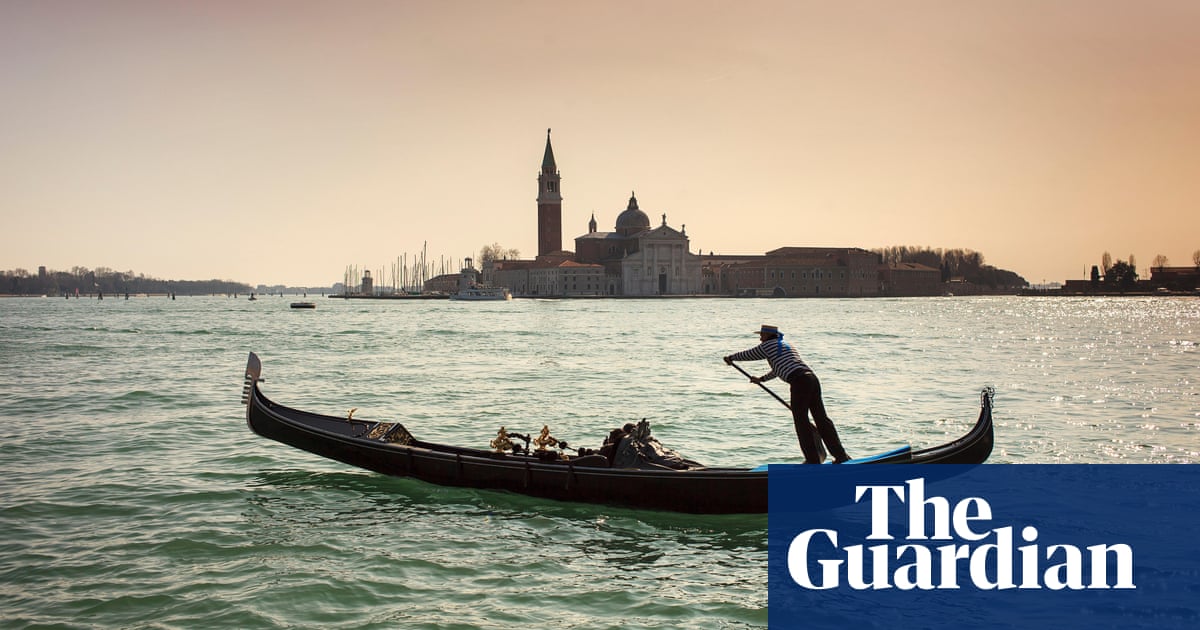With their straw hats and stripey shirts, Venice’s distinguished gondoliers have been deftly rowing passengers through the narrow canals of the lagoon city for centuries. Now they are seeking to add to their number to ensure that the tradition of their ancient profession endures.
Venice’s city hall has announced this week that it is on the hunt for new gondoliers. The job requirements include being 18 or over, having a high school-level education, knowing how to swim, and possessing a medical certificate that proves “a healthy and robust constitution”.
But the application process is no simple matter.
First, budding gondoliers must apply to a training course – Arte del Gondoliere, or Art of the Gondolier. They will only be eligible for that if they prove they can row, or at least show signs of having what it takes to develop the skill.
“Being able to move the gondola around is the most important thing,” said Andrea Balbi, the president of Venice’s gondoliers’ association. “The pre-selection process helps us to understand this, and then they begin the training.”
For anyone familiar with learning to drive in Italy, the training process is equally as rigorous. Trainees must undertake 30 hours of theory lessons, during which they will learn the waterways equivalent of the highway code. They will also be taught English and French, and about the history, art and culture of Venice, with a particular focus on how the city was built and its water routes. Then they will embark on 10 hours of practical training, involving rowing a gondola with its single oar, under the guidance of a master gondolier.
The gondoliering profession has been a pillar of Venice since 1094. For centuries, the 11-metre-long vessels were the main form of transport in the city, ferrying the lower echelons of society around, before they were embraced by aristocrats when their preferred mode of transport – horses – were banned from the narrow streets in the 14th century. By the 16th century, an estimated 10,000 gondolas were being rowed around Venice.
Today, there are only 433 gondoliers. The profession used to be exclusively male, with its coveted licences usually handed down from father to son. But now the profession is open to anyone who is an EU citizen. Giorgia Boscolo became the first female gondolier in 2009, and today there are 14 women.
With an estimated 30 million visitors a year to Venice, gondoliers are much in demand. But finding new recruits is less about serving the huge numbers and more about keeping the profession going, according to Balbi.
“There’s a generational change: people retire and need to be replaced,” he said. “So we do the training courses whenever there is a necessity. People who apply themselves to this profession do so because they are in love with Venice and are convinced that they are bringing forward the traditions of the gondola and the city.”
after newsletter promotion
Gondoliers have often fought to keep their profession intact. When Venice introduced a public motorised water bus service in the 1880s, gondoliers held their first strike. Today, gondoliers often protest against water taxis and speedboats, arguing that their reckless driving risks lives as they whip up waves that rock the smaller vessels.
Balbi has been a gondolier for 30 years. Over that time, he has witnessed the growth in tourism, and the changing needs of the passengers who board his boat.
“You usually find that the young ones only want to take selfies,” he said. “It’s families or people over 30 who show more curiosity about the city and want to know its history and how it was built.”
Such was the enthusiasm of a group of Chinese selfie-takers on a gondola last December that they failed to heed the gondolier’s order to sit down, knocking the vessel out of balance and falling overboard. The gondolier, who had been attempting a tricky manoeuvre as he navigated the boat under a bridge close to the area of Saint Mark’s Square, also ended up in the water before scrambling to rescue his passengers.
Balbi said trainees would also be taught key words in non-European languages to avoid such incidents occurring again.
Such was the demand for the course, which costs applicants over €1,000, Balbi said, there was no risk of the profession dying out. “Venice would need to die before this profession dies,” he added.
